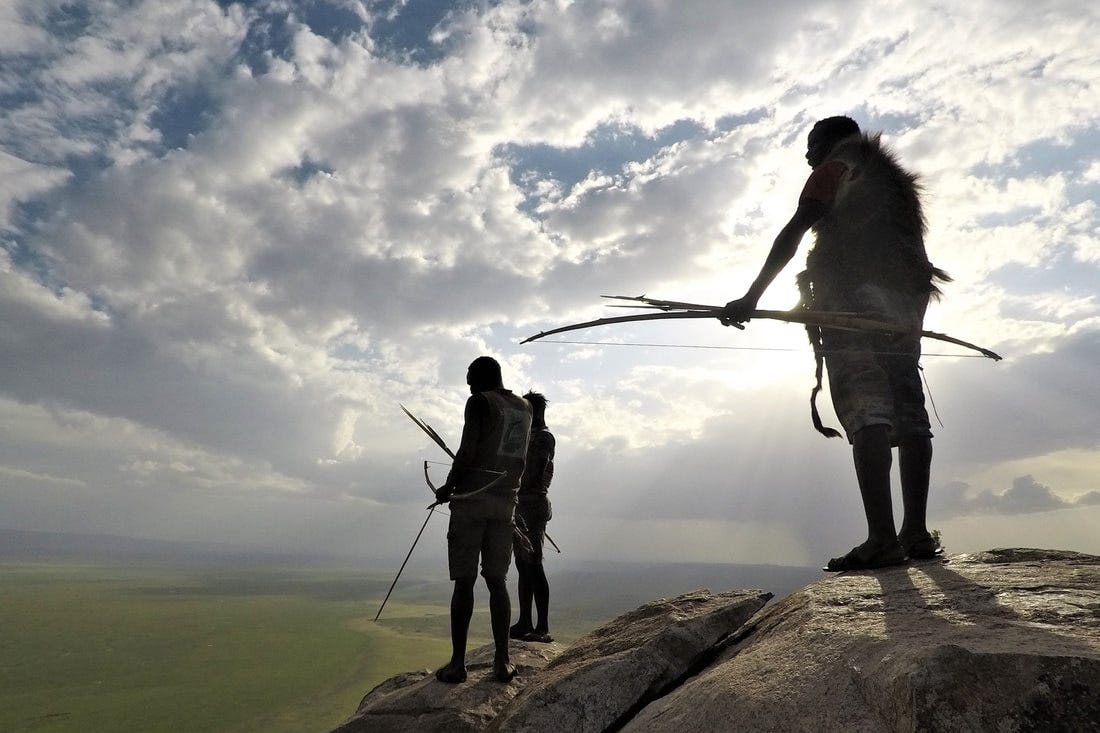Review: Hunter-Gatherers as models in public health
Pontzer, Wood, Raichlen, UCLA, Hunter-Gatherers, Public Health, Diet, Longevity, Obesity, Physical Activity
This study looks at the Hadza people of Norther Tanzania compared to large-scale (Western) societies and relative rates of obesity, cardiovascular disease, and physical activity regarding diet and lifestyle factors.
“Longevity among small-scale populations approaches that of industrialized populations, and metabolic and cardiovascular disease are rare. Obesity prevalence is very low (<5%), and mean body fat percentage is modest. Activity levels are high, exceeding 100 min / d(ay) of moderate and vigorous physical activity, but daily energy expenditures are similar to industrialized populations. Diets in hunter-gatherer and other small-scale societies tend to be less energy dense and richer in fibre and micronutrients than modern diets but are not invariably low carbohydrate as sometimes argued.”
Life expectancy (at birth) for the Hadza is low, 30s - 40s. However, this is due to a phenomena called “squaring of the morbidity curve” that conflates (average) adult lifespan with life expectancy (at birth). The later is disproportionately impacted by what I call “tiger problems” — acute trauma and infectious disease. Only about 60% of newborns survive to age 15 and 40% to age 45.
The authors note “A common misinterpretation of (life expectancy at birth) is to assume that few hunter-gatherers live to older age… adults regular(ly) live(ing) into their 60s and 70s.”
What about quality of life? Let’s look at some cardio-metabolic factors; the so-called “diseases of civilization.”
“Fewer than 2% of Hadza adults qualify as overweight (BMI 25 - 30)”, the average BMI being about 22 for both men and women. Obesity rates for men are about 1.2% and 4.6% for women. In the United States, the obesity rate in 2020 was 41.9% (ref.) — about 10x that of the Hadza.
As for Type 2 Diabetes (T2D), an estimated 0 - 2% of pastoralists are estimated to have T2D while in the United States (as of 2021) the rate of T2D is 11.6% (ref.) — 5x to 10x that of the Hadza.
The article reports that “more than 60% of US adults 60+ are hypertensive (have high blood pressure), while less than 30% of hunter-gatherers and subsistence farmers 60+ years show even mild hypertension.” The Hadza had an estimated VO2max of 56.7 for men 20 - 40 years old, which is higher than the average male UFC fighter (51, ref.).
Regarding general physical activity, the article cites a couple other studies reporting on other indigenous tribes who get about 6-9 hours of walking throughout the day, or 5.8 - 8.7 miles per day. That’s about 11,000 - 17,000 steps / day.
In the United States, the real “disease of civilization” seems to be that we stifle both activity and creativity; because people under 18 years old walk about 10k - 16k steps / day (ref.) while adult estimates are 5k - 7k steps / day (ref., ref., ref.). Fewer than 10% of Americans get the RDA of 150 minutes of exercise / week. That means people are moving less than 20 minutes per day, let alone 6 - 9 hours.
It’s also important to note that the Hadza sleep 5.9 - 7.1 hours / night. To me, that’s a significant indicator that “more” isn’t necessarily better, but that “better is better.” I’ve often wondered if it’s better to be knocked out cold for 6 hours straight, or be somewhat restless for 9 hours?
Further, the authors make an important note towards non-dietary habits that have long been understood as critical factors in the broadest sense of health beyond longevity.
“Finally, it is worth considering what other aspects of traditional lifestyles, in addition to diet and physical activity, might contribute to the remarkable health of hunter-gatherers. Close friendships and family bonds, low levels of social and economic inequality and lots of time spent out-doors are typical in hunter-gatherer populations and other small-scale societies. The absence of these in modern societies is associated with chronic social stress and a range of non-communicable diseases, including metabolic disease and obesity.”
Detailed discussion below…
Pontzer, H., Wood, BM, & Raichlen, DA. (2018). Hunter-gatherers as models in public health. UCLA. http://dx.doi.org/10.1111/obr.12785 Retrieved from https://escholarship.org/uc/item/1m87g85c
Keep reading with a 7-day free trial
Subscribe to Savage Zen Jiu Jitsu to keep reading this post and get 7 days of free access to the full post archives.




